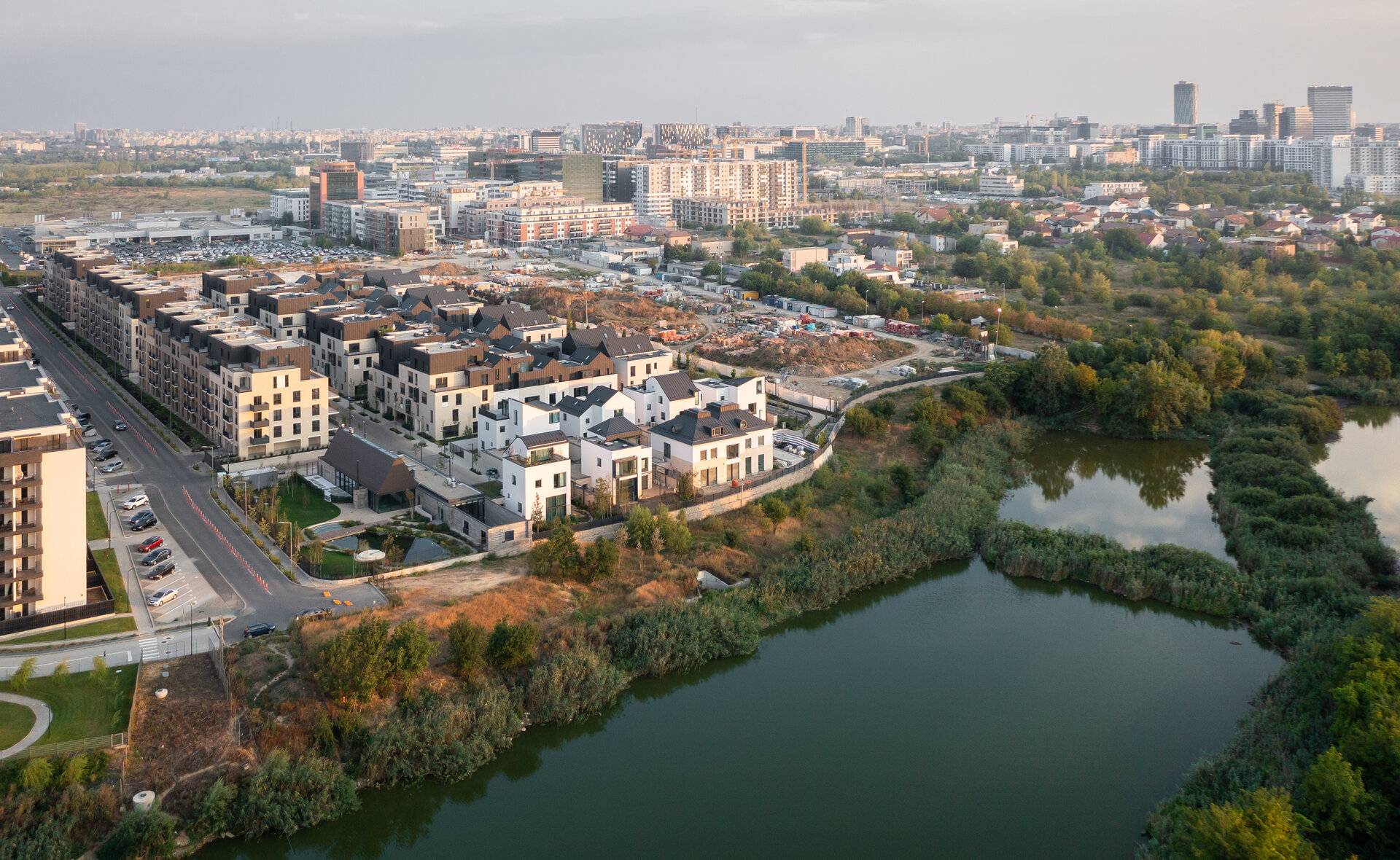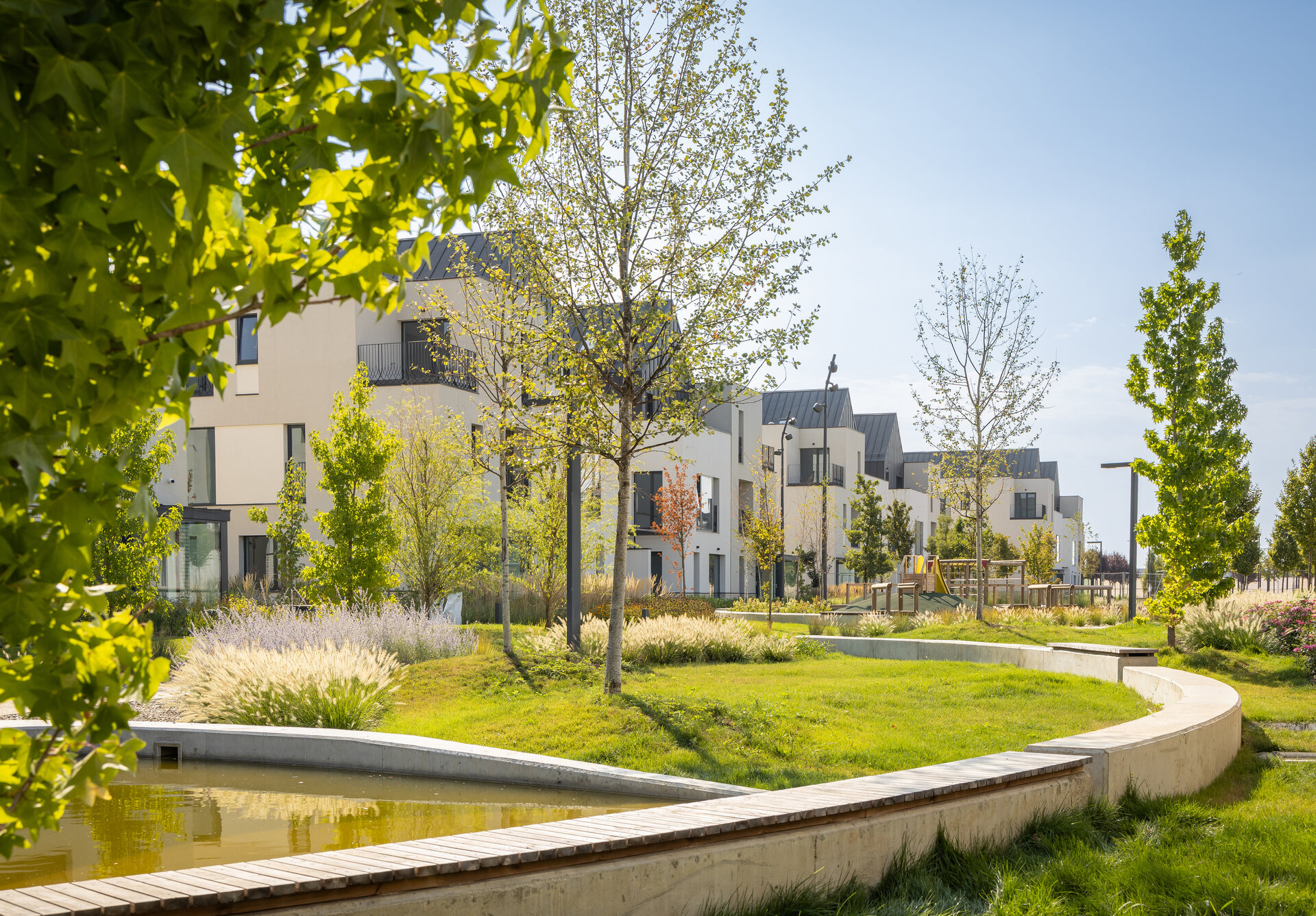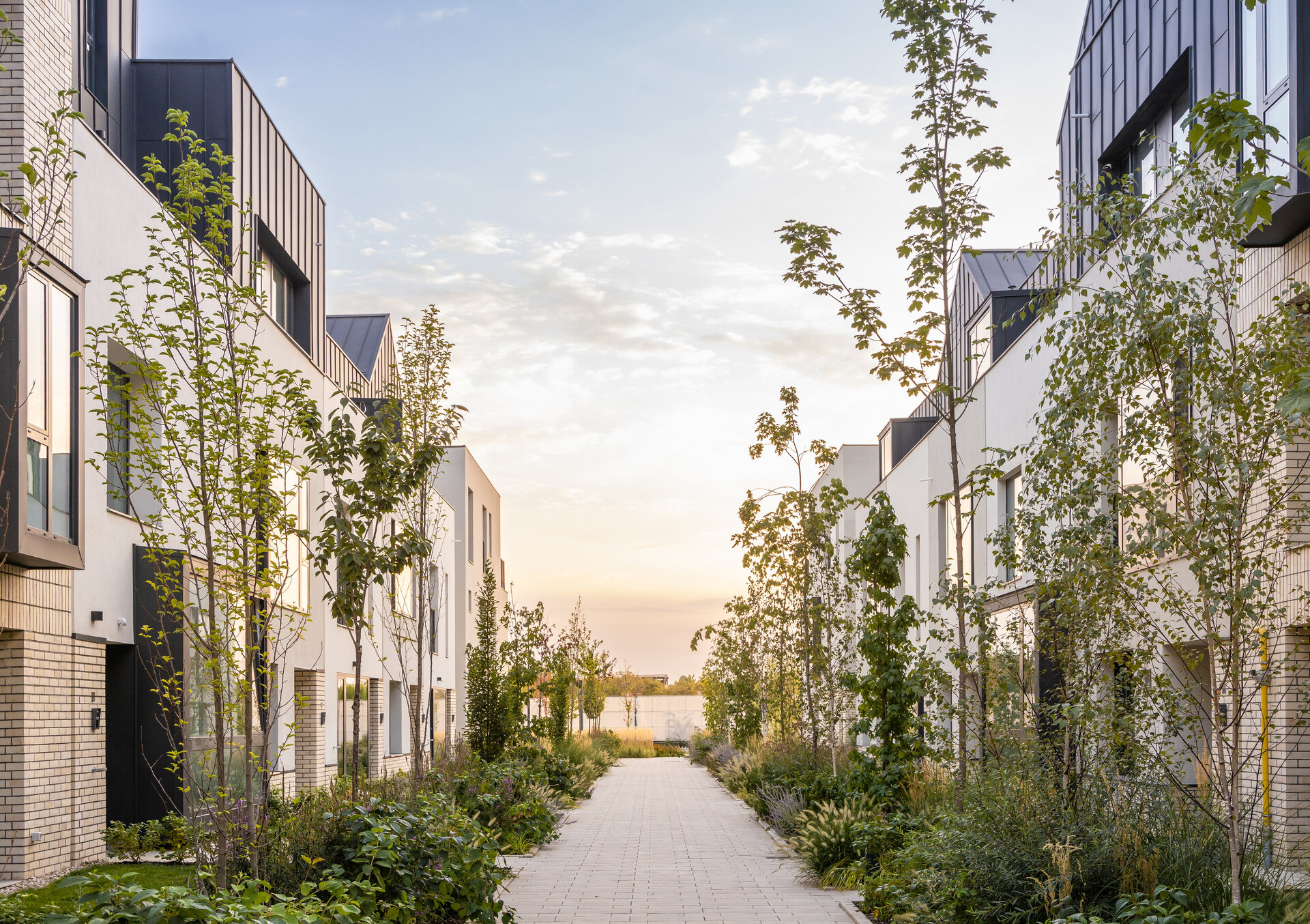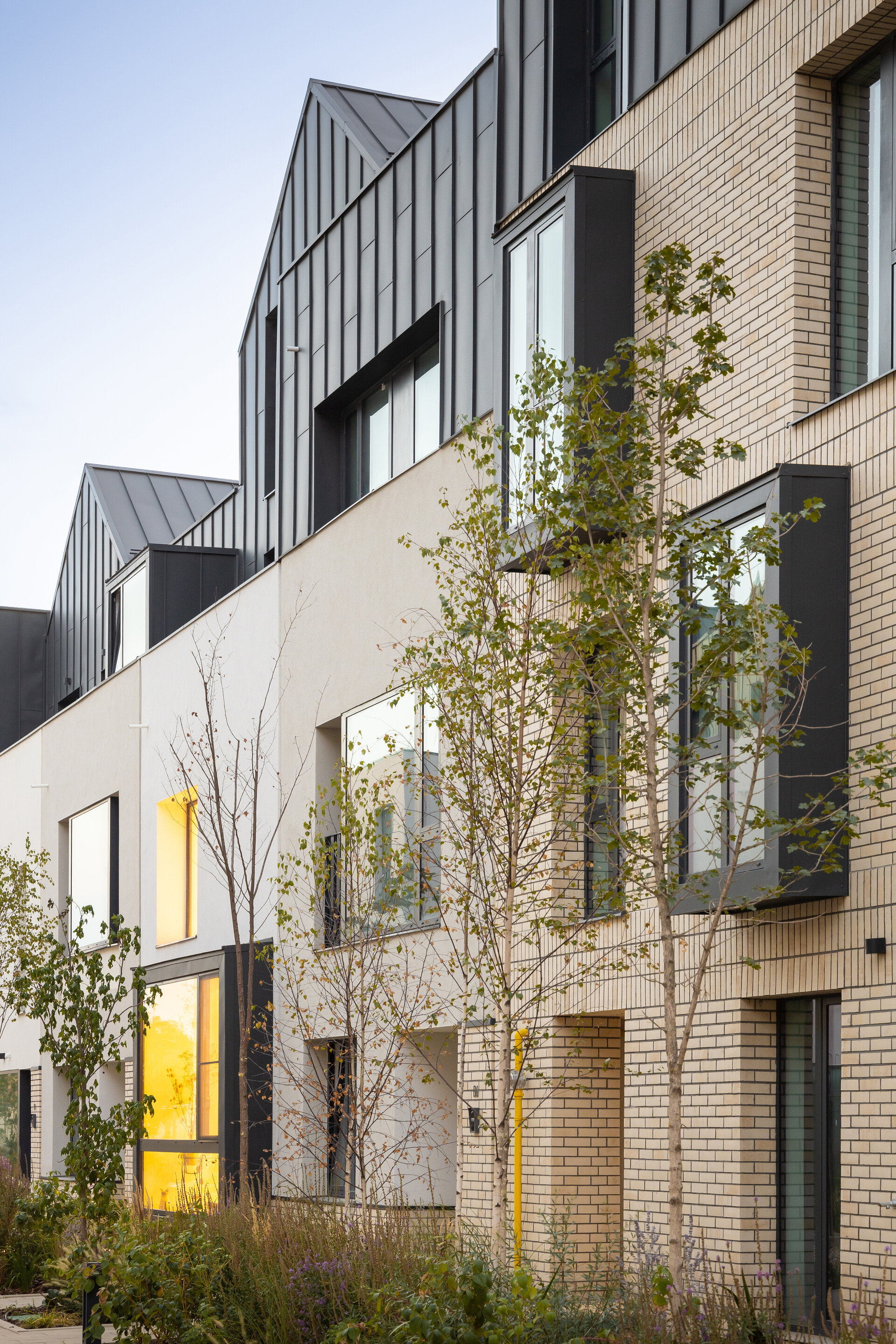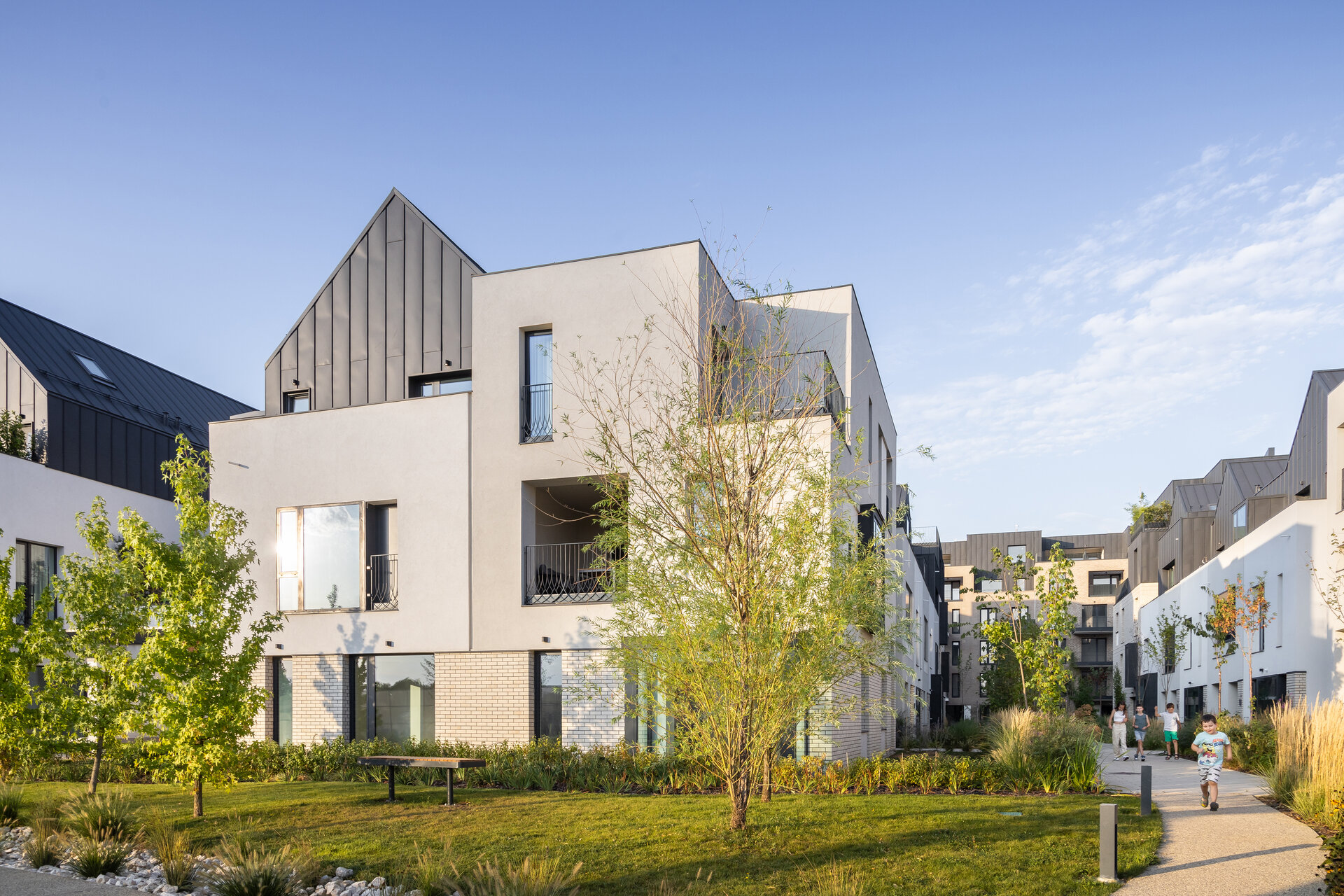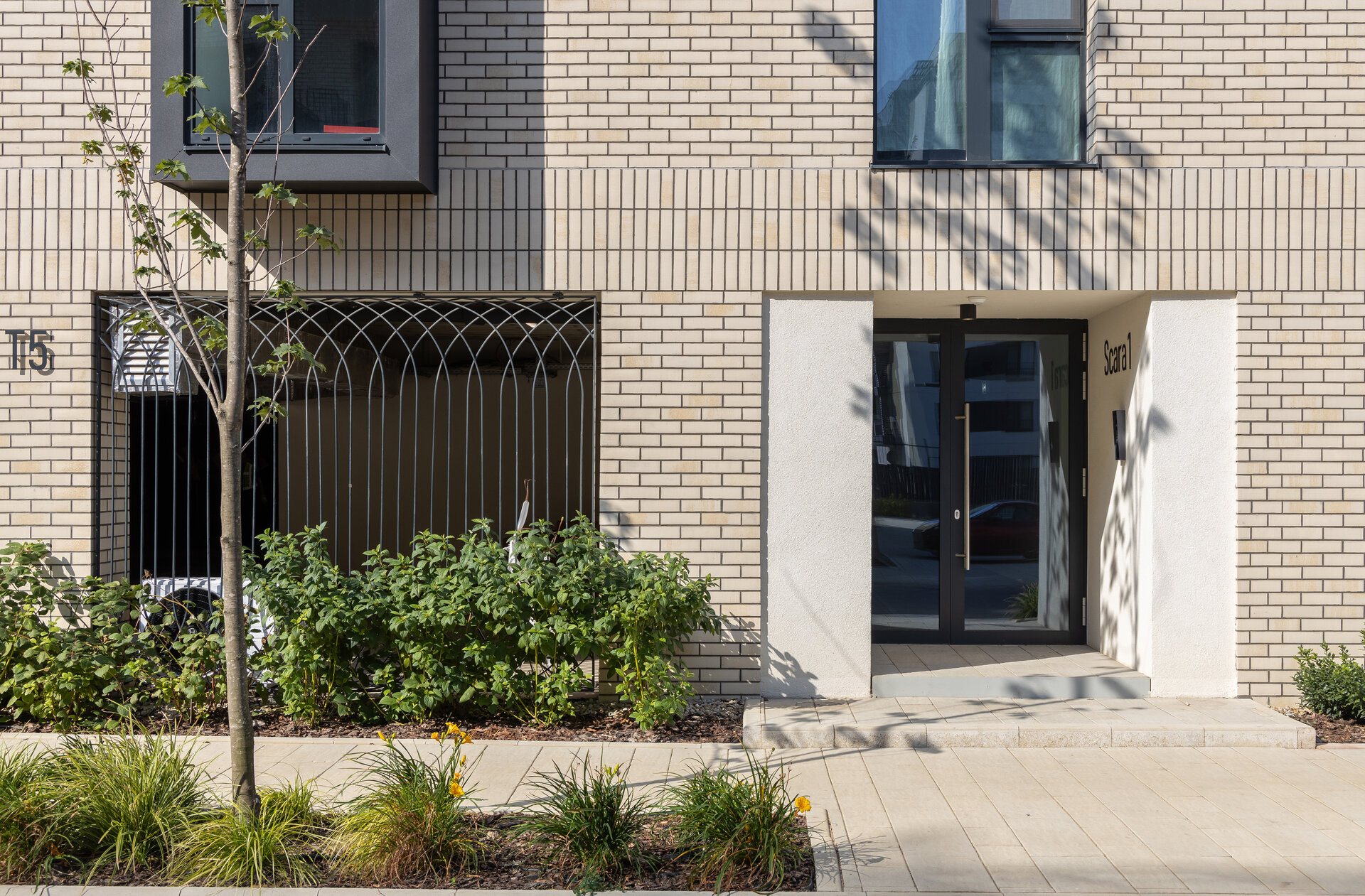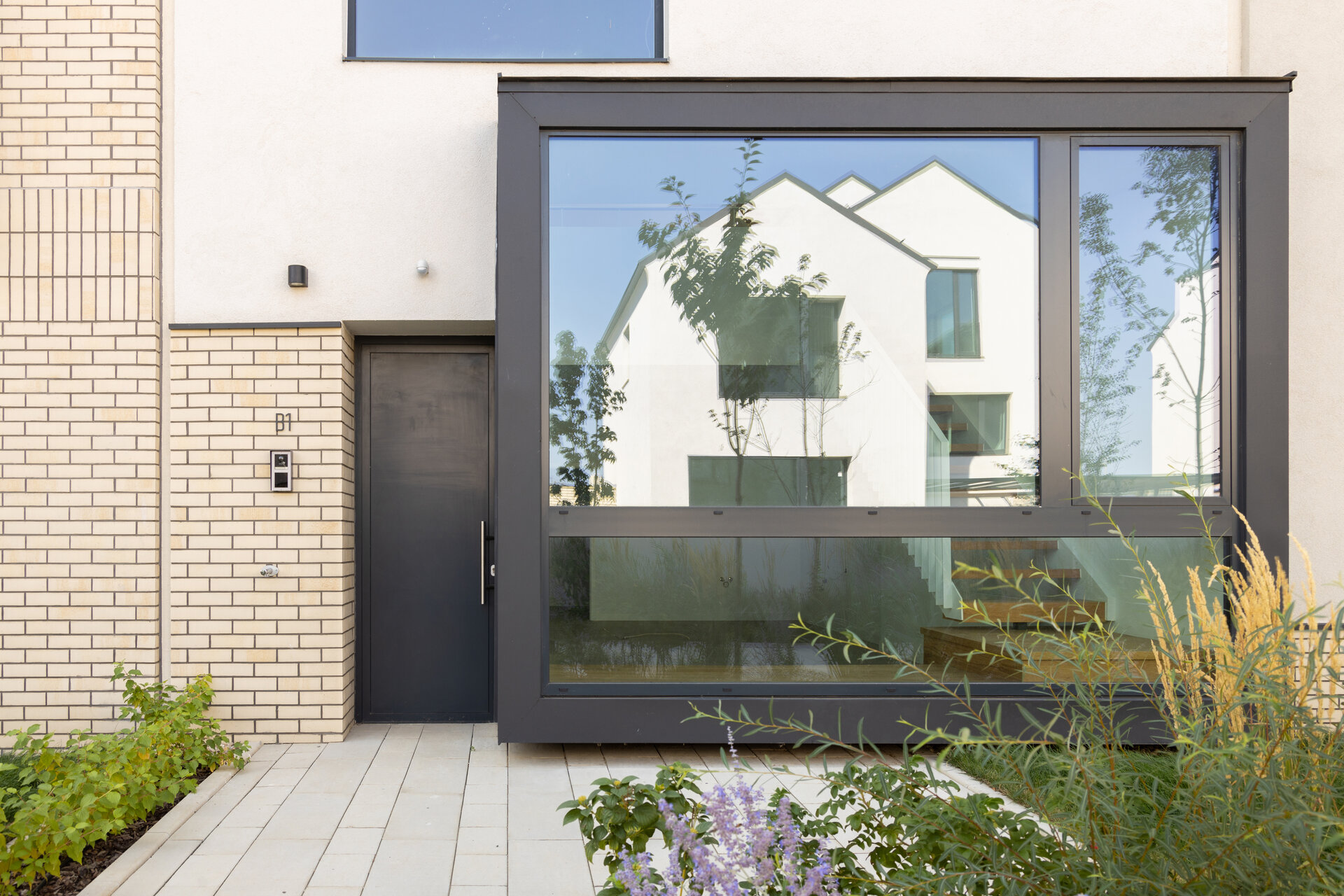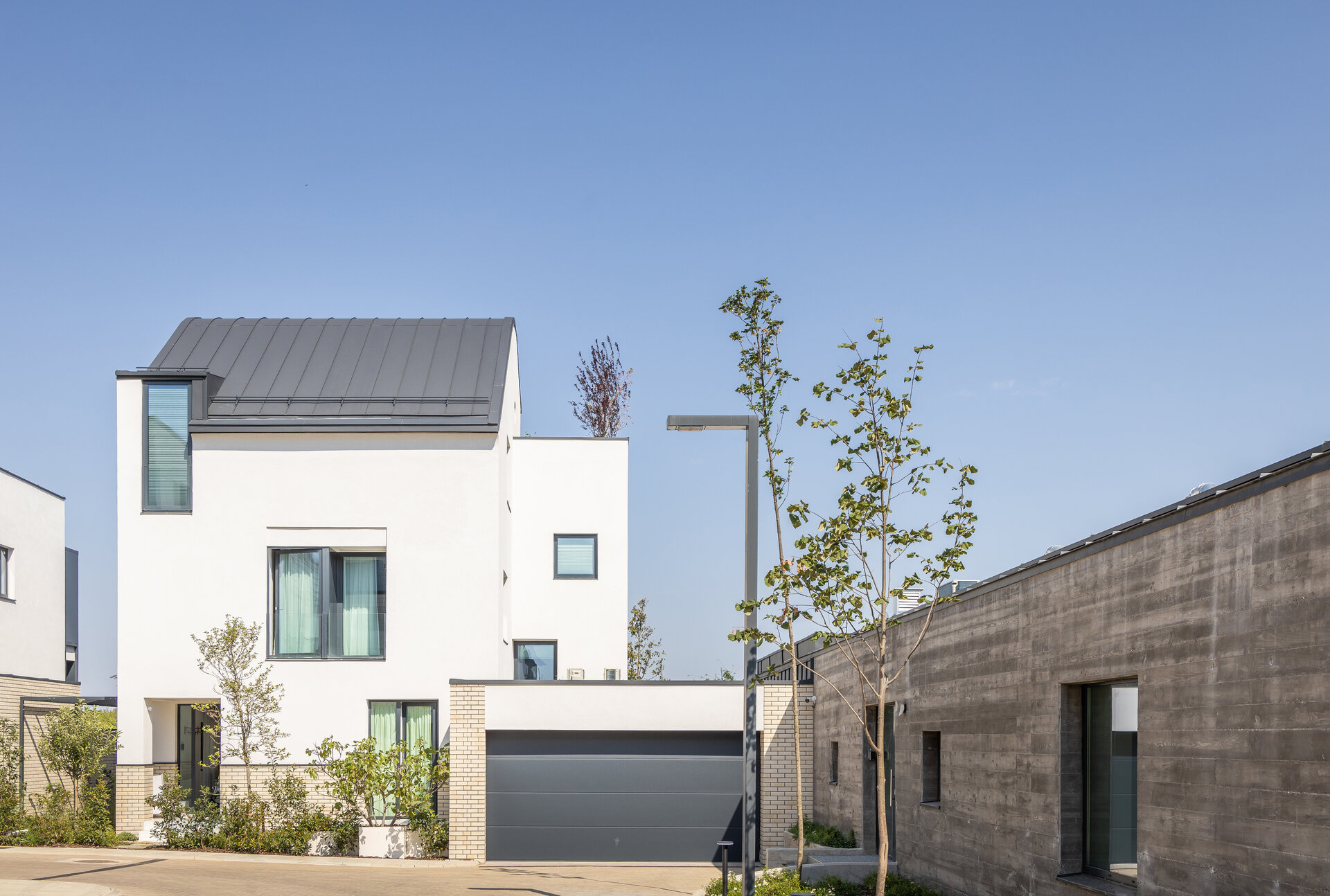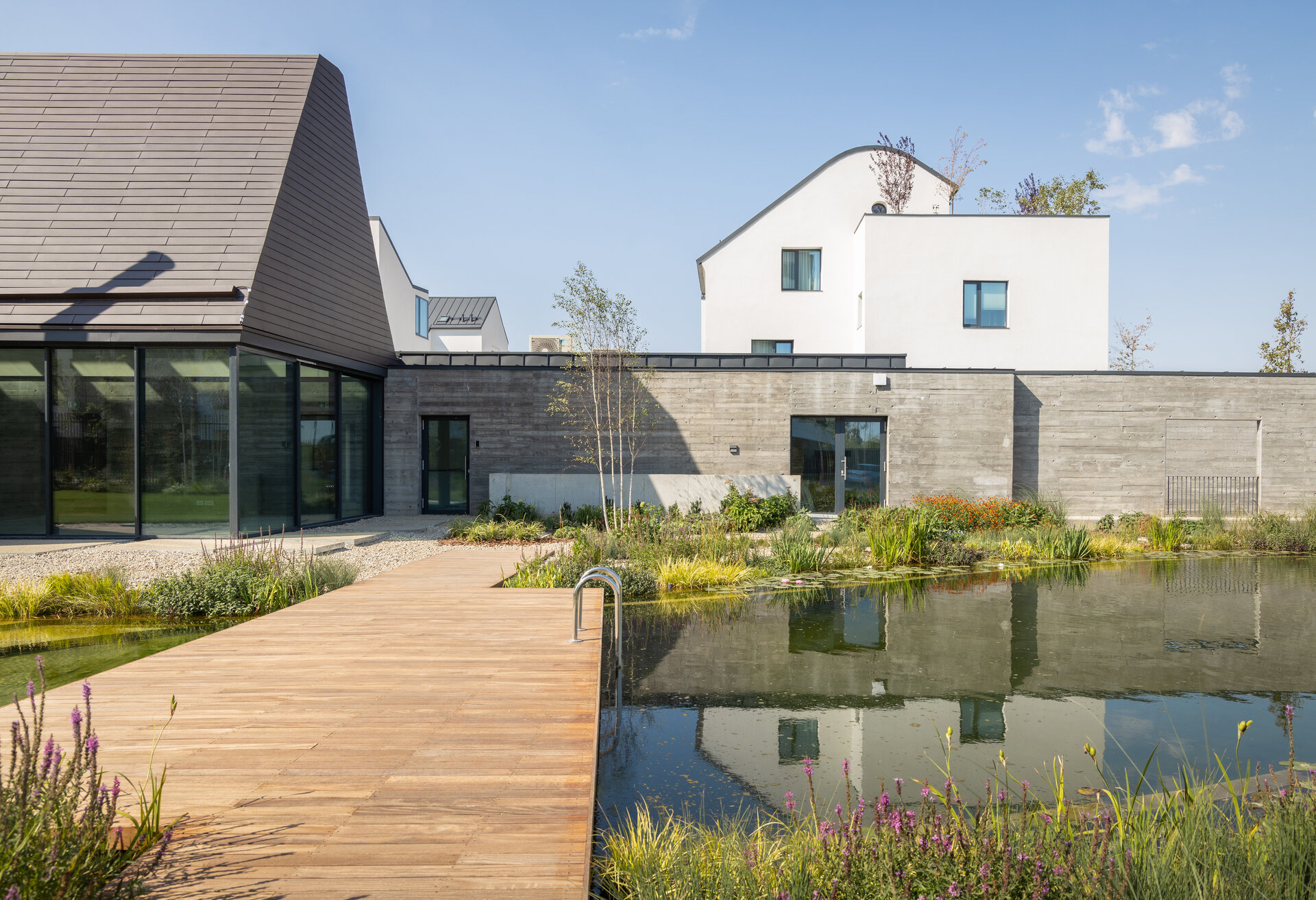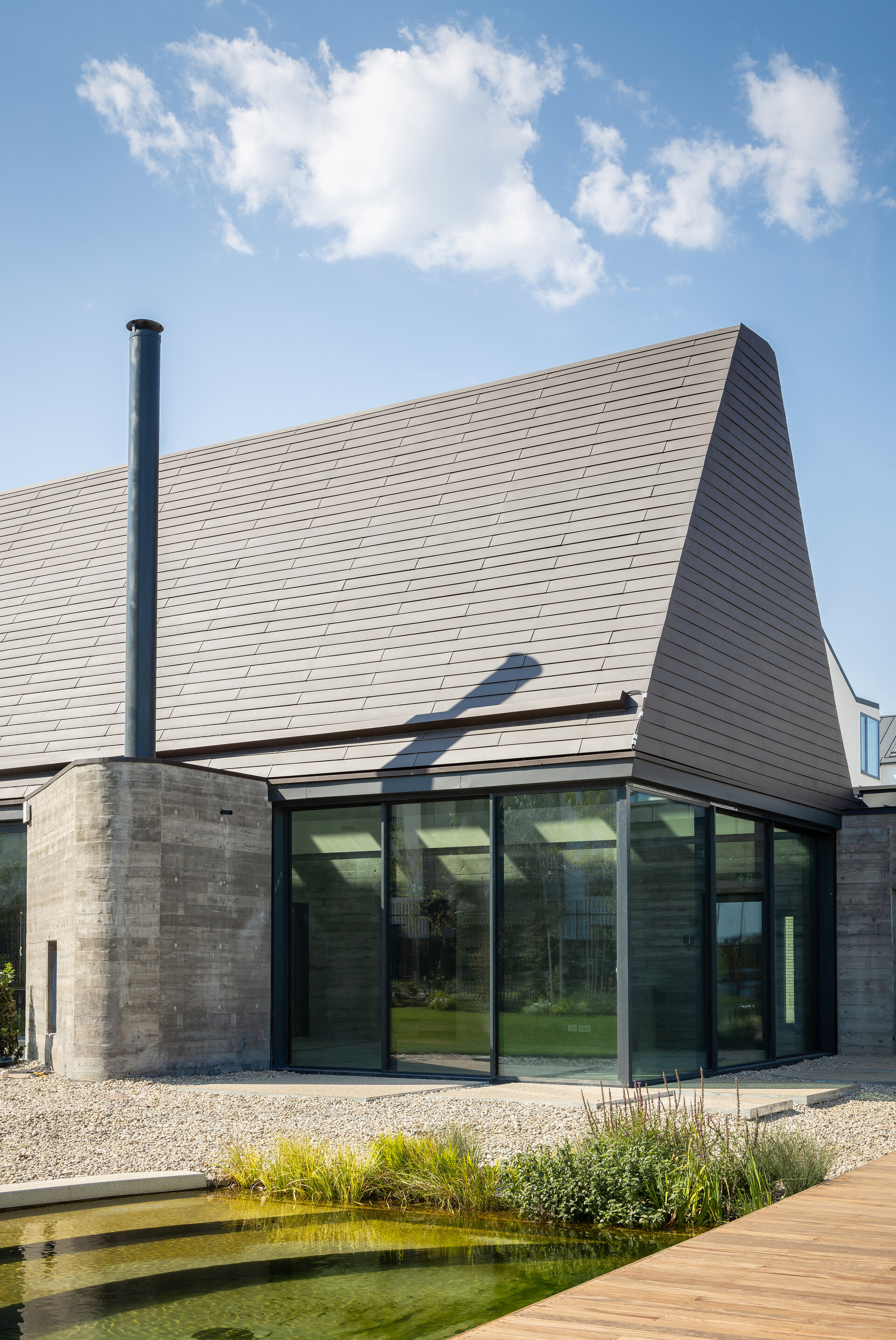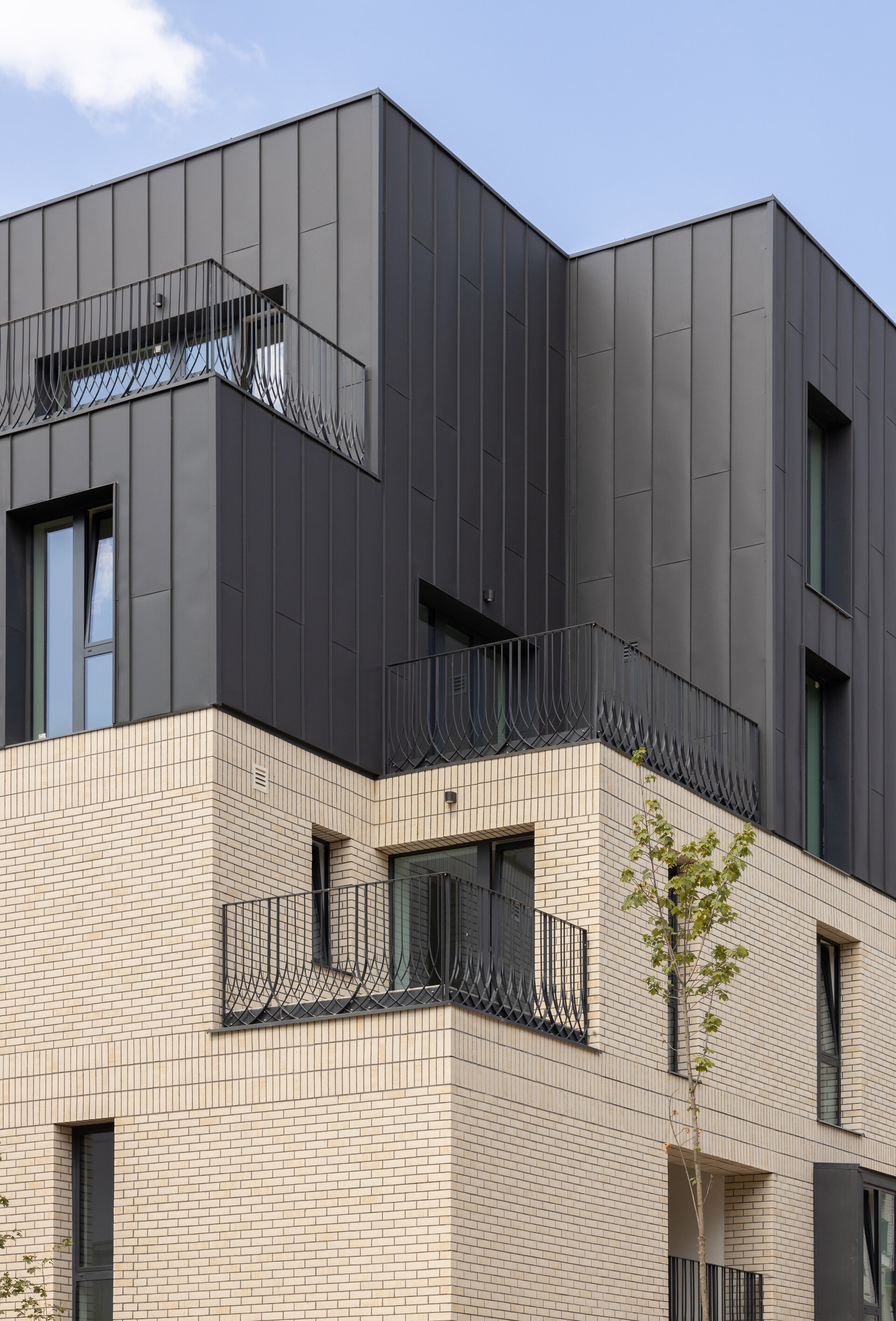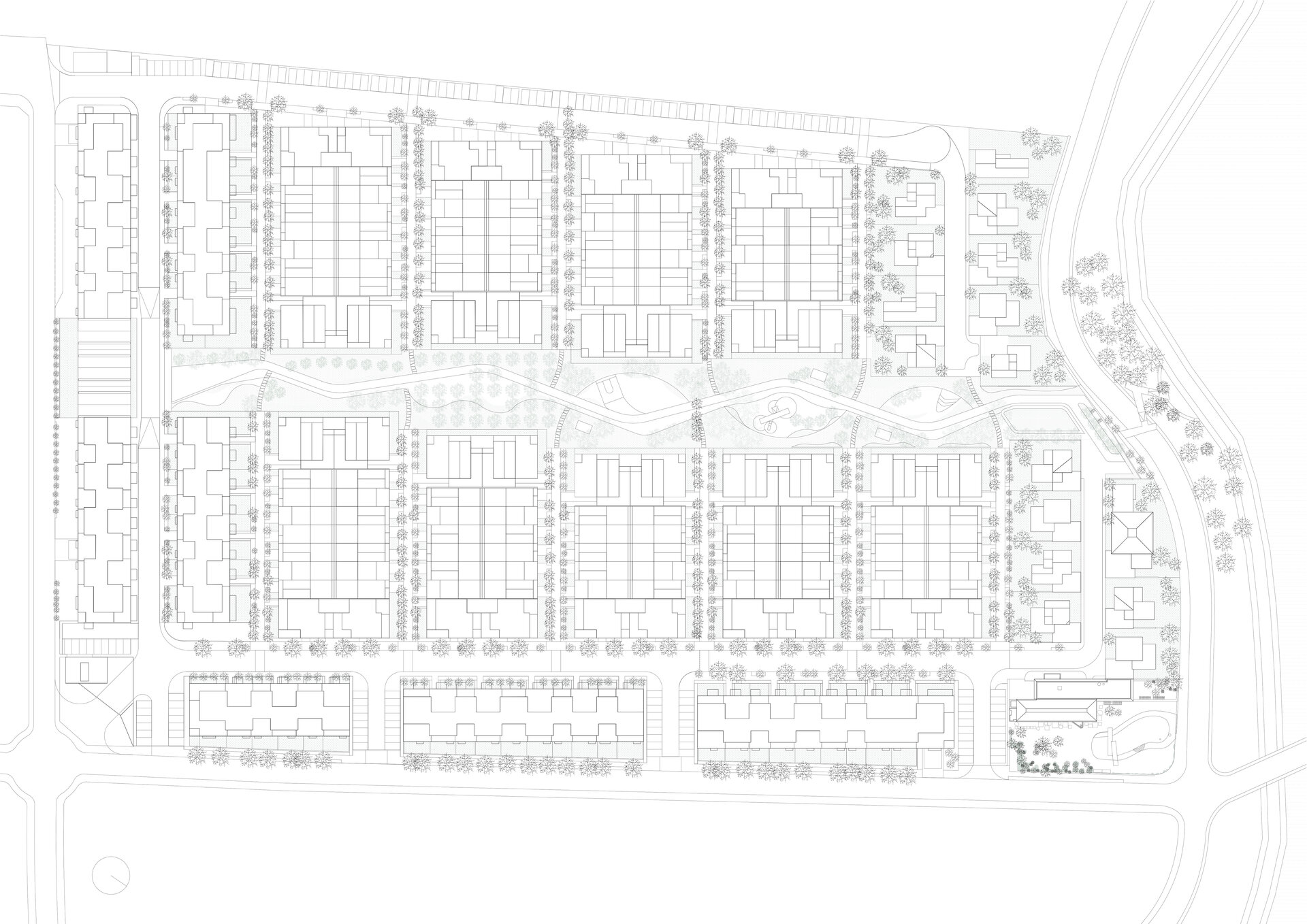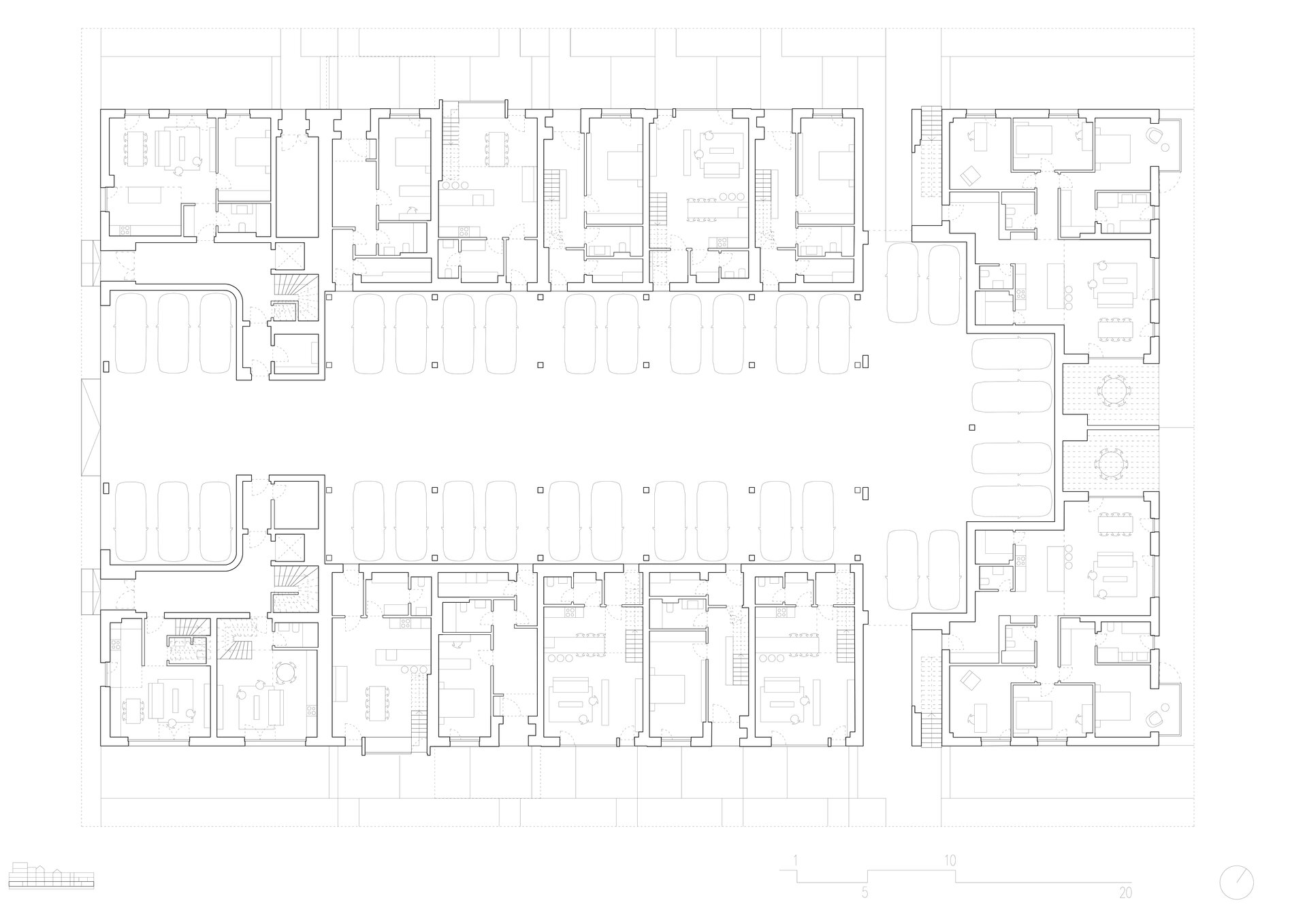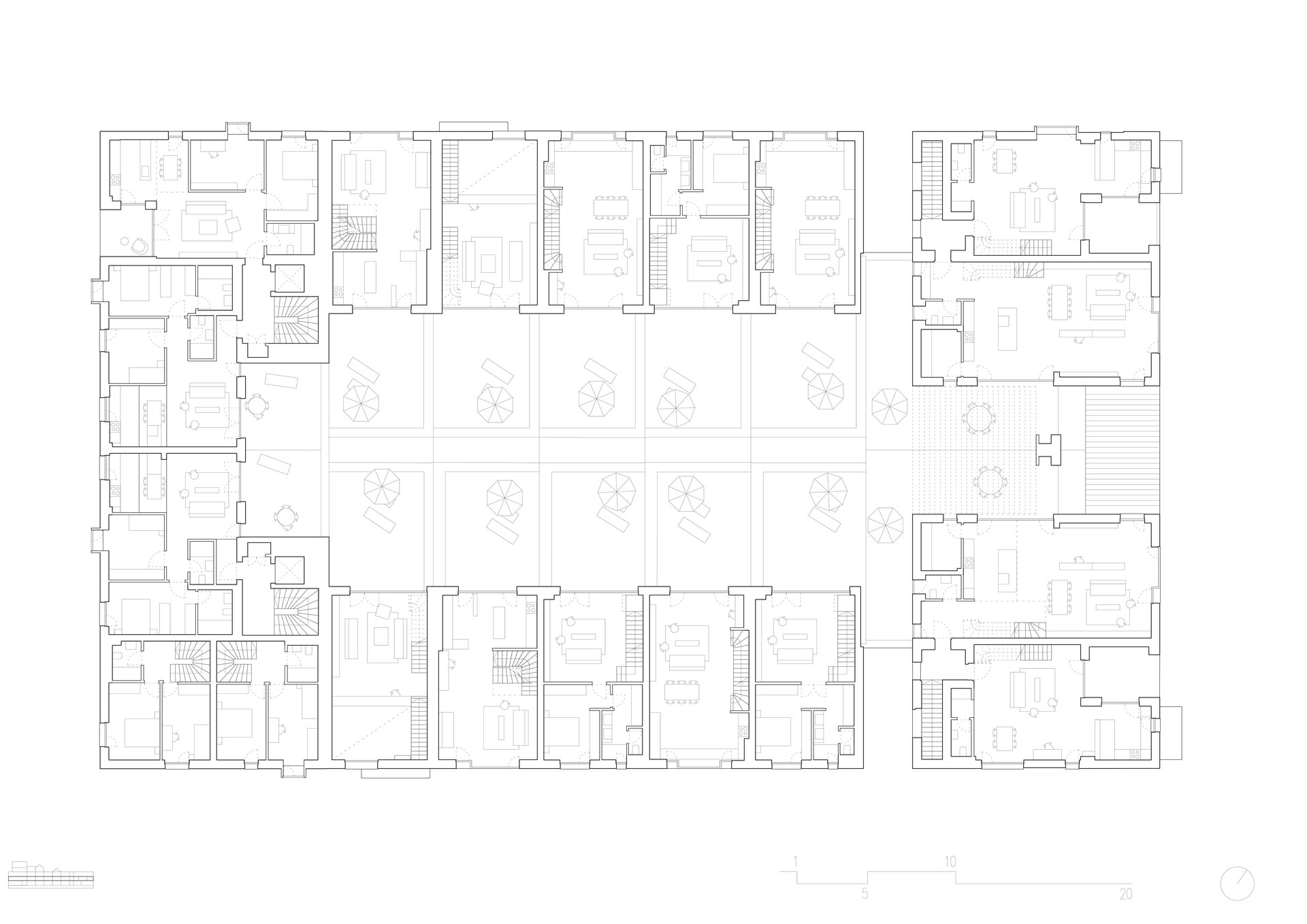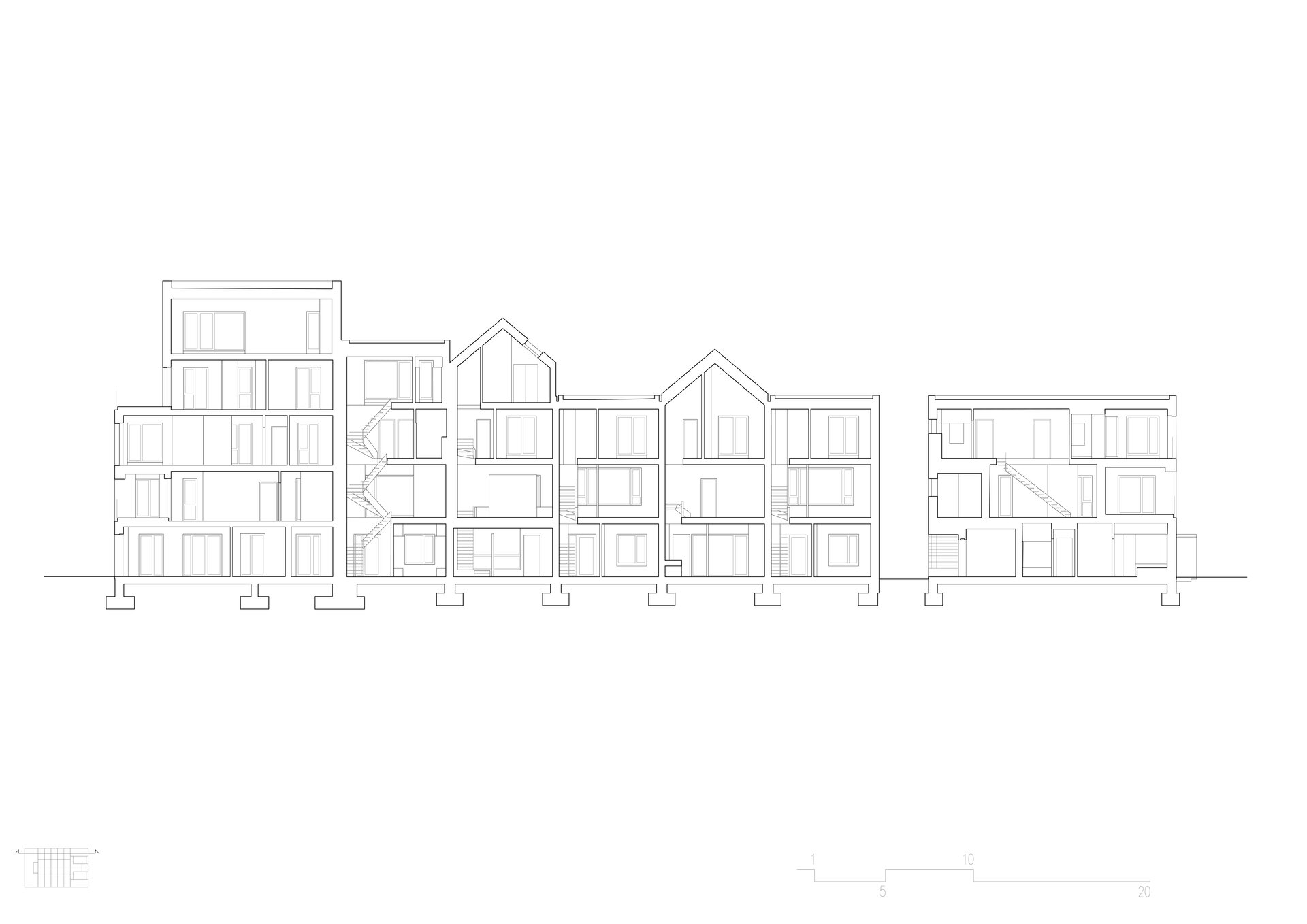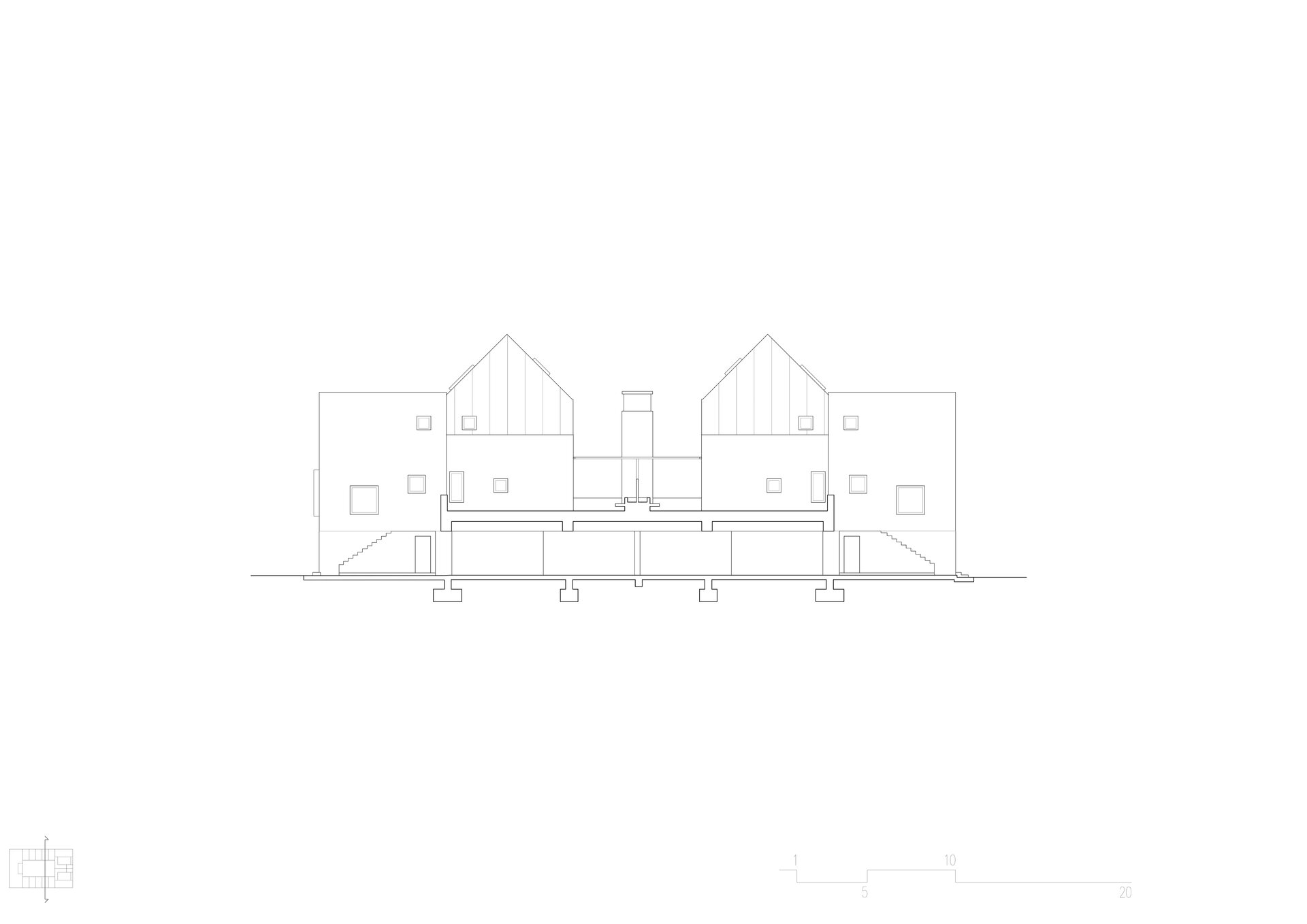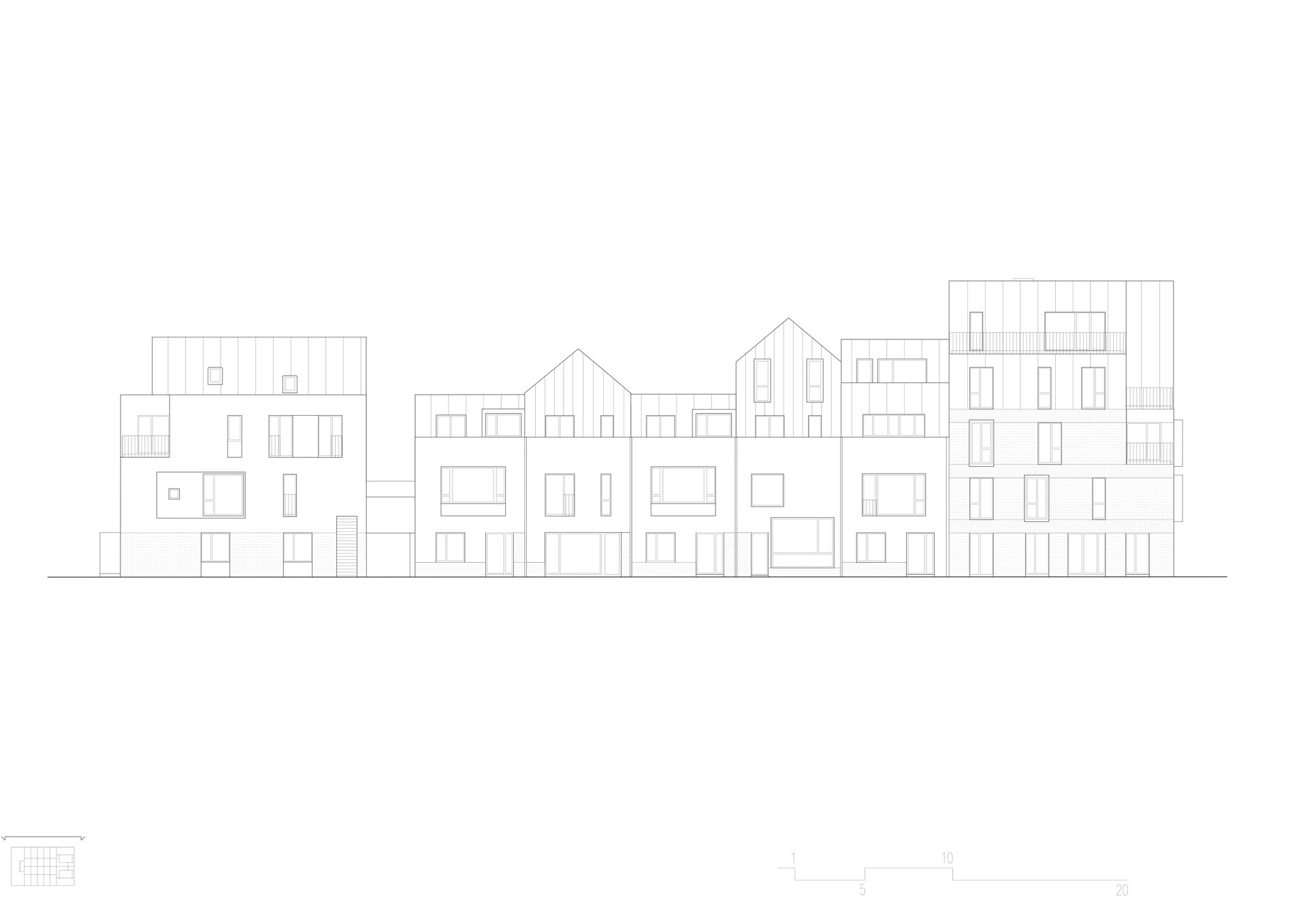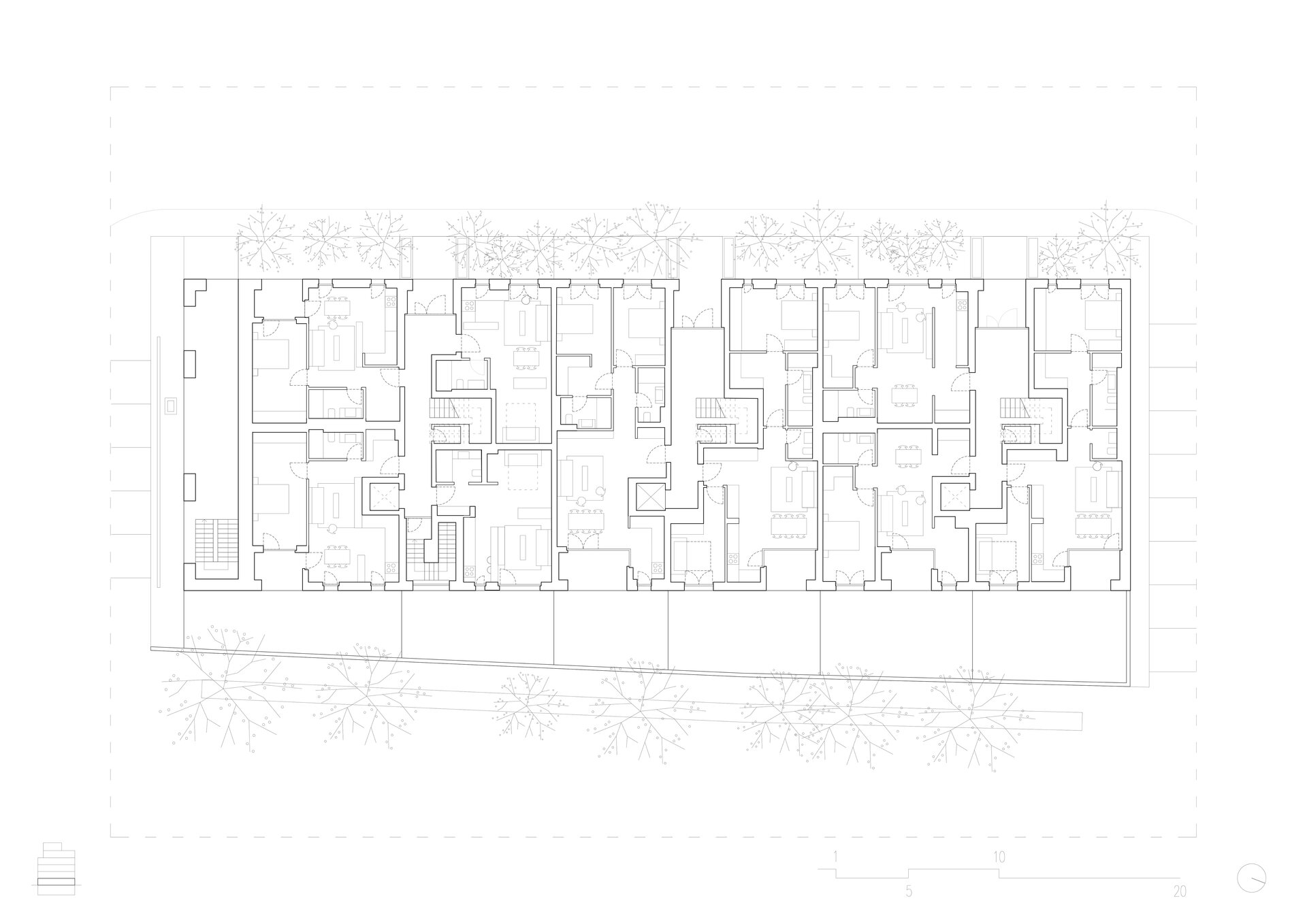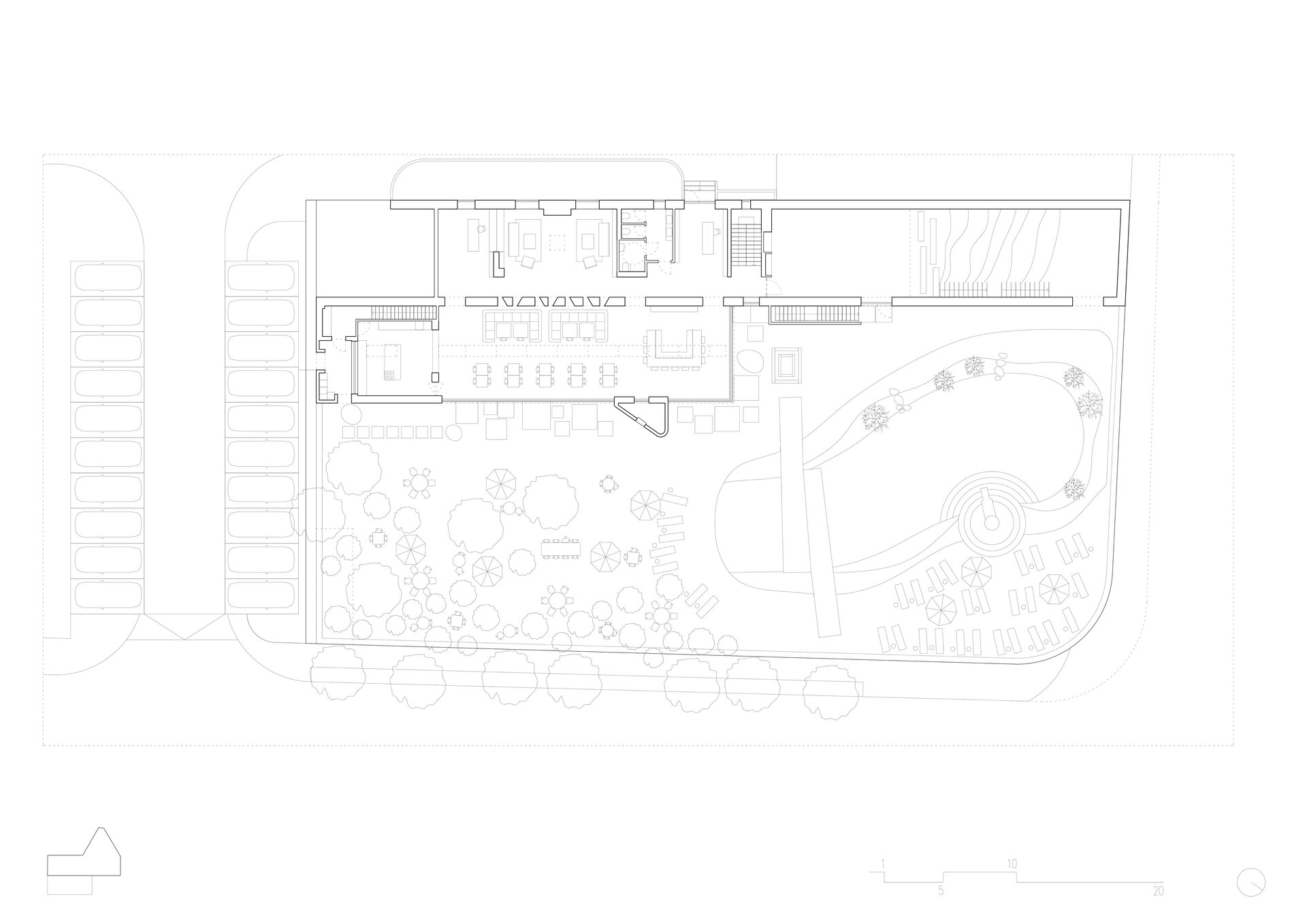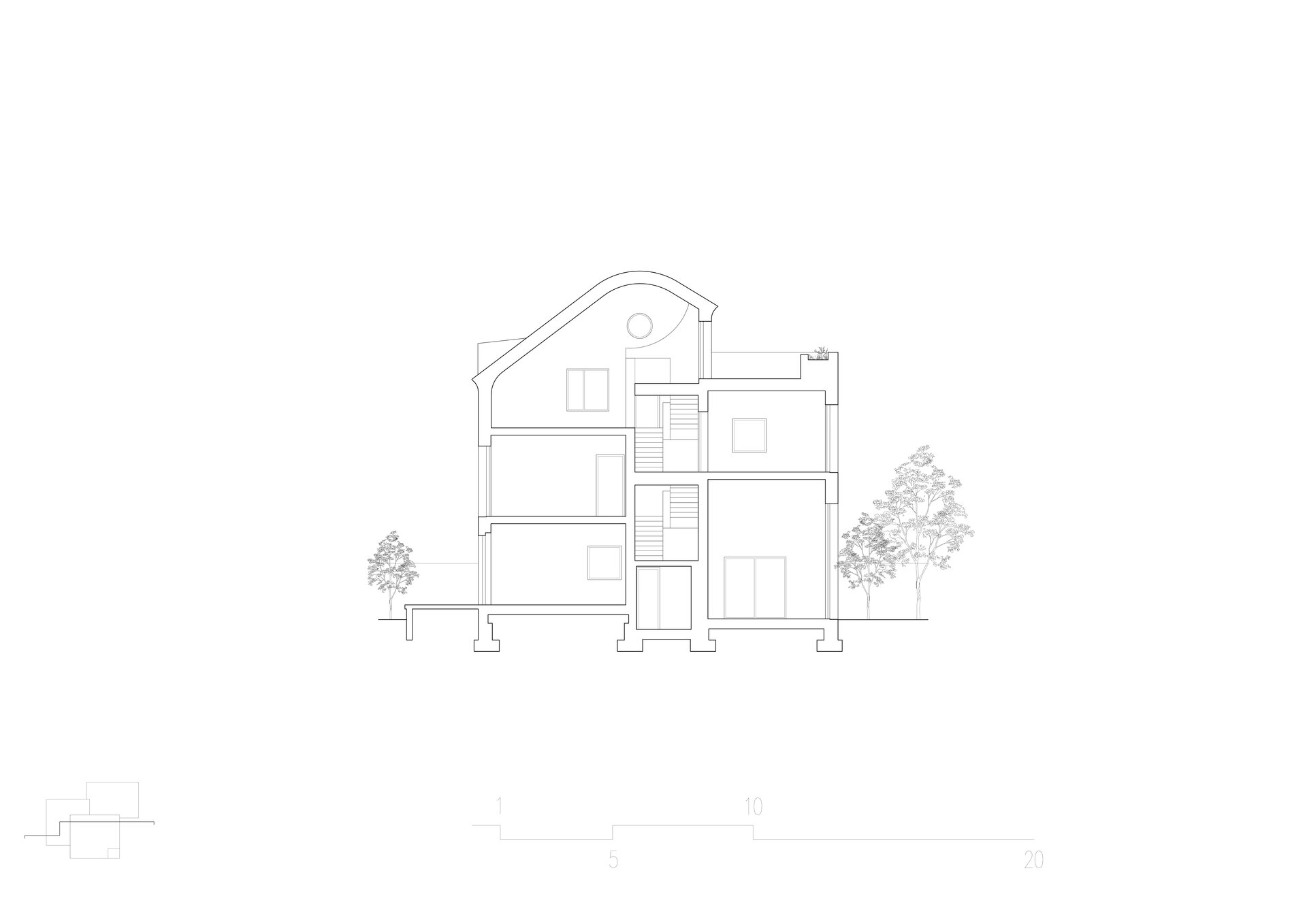
- Prize of the “Built Architecture / Collective Housing Architecture” section
Avalon Estate
Authors’ Comment
The site of the Avalon Estate project is located in the Pipera district, Voluntari, near Bucharest. The land was free of any built structures and had a relatively regular shape of approximately 8 hectares. As a large-scale ensemble, and in the absence of a clearly defined framework of built elements, the project had to be self-sufficient in terms of what happens within it. In this case, architecture is no longer designed at the scale of an object in relation to the built area around it but at the ensemble level. For Avalon Estate, we had the opportunity to create a community as we imagined it, with a mix of housing types specific to a community, including individual houses, row houses, apartments in small buildings with unique solutions, as well as apartments in collective buildings, in addition to an area of services, a club, a kindergarten, and a common park area, directly accessible to residents.
Such integrated projects are not very common in the market. Avalon Estate is a fortunate case that does not attempt to conform to a requirement or market analysis. By definition and scale, it is an experimental project, attempting to anticipate a new way of living in Bucharest. The challenge of this project for us was to build a community.
The types of housing range from apartments to townhouses, row houses, and individual urban villas, offering the ensemble a different image in terms of sizes and densities meant to mitigate repetitiveness and provide high-quality living. Thus, even though the scale of the project is considerable, its diversity in housing makes it human and pleasant. One of the first ideas that emerged was garden living, a form of living closer to the ground and green space. This concept of "garden living" led to the development of a parking system that conceals cars without affecting the efficiency of entry/exit areas. This resulted in a main road for vehicle circulation located peripherally, which successfully keeps all auto traffic at the periphery of the complex. The rest of the internal circulation includes walkways, bike paths, and walkable platforms, leaving the community with a green area of approximately 30% of the total 8-hectare land.
The units that define this project are row houses commonly found in pedestrian centers and old town centers in other cities. This type of housing successfully solves the traffic issue. On the one hand, it conceals cars under certain terraces while remaining open to garden living, creating two different types of outdoor areas. Each unit has a front garden on the pedestrian street side at ground level, as well as its own terrace on the upper floor. Consequently, two of the house's floors have outdoor spaces. All internal roads and sidewalks were designed to facilitate circulation and pedestrian crossings. The central park – the grand garden – intended for residents, is a major focal point of community life, serving as a gathering place, a play area, and a recreation area.
- Avalon Estate
- Marmura Residence
- Colina Lac Residence
- Apartment Building on Virgiliu Street
- Stejarii Collection Residential Complex
- Maior Cranta apartment building
- Dynamic Residence
- Brick House
- Residential Building in Northen Bucharest
- Lake House 2
- Str. Sergent Nuțu Ion 2 - residential building
- One Verdi Park
- Uranus Apartments
- The Corner Armeneasca CN
